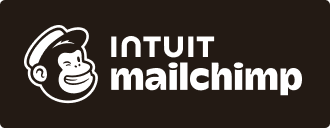|
Seth Blitch
Connectivity Within & Among Communities
Seth described his childhood connection to nature and how who we are from as well as where we are from matters. He went on to share his experiences in Apalachicola and drew parallels between the various watersheds, including the Mississippi and Teche Vermilion. He spoke about the waterways acting as conduits for culture and commerce. He also described how the waterways have been impacted through the years by human activity and the importance of recognizing our role in protecting these natural areas. He highlighted several species of birds and fish that depend on a healthy environment to survive. The role of The Nature Conservancy in protecting valuable habitats in Louisiana was clearly communicated through this presentation. Check out the website for more information!
Louisiana Nature Conservancy
Mary Anne Piacentini
Grow it and They Will Come: A Guide to Growing a Prairie Movement
Mary Anne shared with us the history of the Coastal Prairie Conservancy which is in the southeast region of Texas. CPC is an accredited, non profit land trust which protects over 30,000 acres. The protection of this land reduces flooding, creates habitat, connects people to nature, stores carbon and reduces the effects of climate change. Mary Anne detailed the process of starting a movement and watching it grow. She also suggested a plan for us all: Spread the word, be creative, establish objectives, mobilize at a grassroots level to gain momentum and build from there.
Coastal Prairie Conservancy
Jill Andrews
The Nature Who? Connecting People to Nature at Cypress Island Preserve
Jill’s presentation about Cypress Island Preserve included detailed maps showing the land protected right in our backyard. The biodiversity and beauty of the area was demonstrated through a great collection of photos. She also discussed the challenges of maintaining publicly available aspects of the protected area including frequent storms and flooding, infrastructure maintenance and working with local officials.
Cypress Island Nature Preserve
Christina May
Go Big, And Go Home: Techniques, Tools, and why both big and small projects matter on the landscape.
Christina shared about the value of big projects such as the mitigation bank model and wetland treatment cells which capture a larger watershed through a smaller area which brings a variety of benefits. She also spoke about the benefits of smaller projects including neighborhood stormwater ponds and rain gardens. She also provided a variety of tools and resources, some of which are included here:
• Louisiana Department of Wildlife and Fisheries – Private Land Management Assistance
• US Department of Agriculture, Natural Resource Conservation Service Working Lands for Wildlife Initiative
• Environmental Quality Incentives Program
• Landscape Conservation Initiatives
Amber Robinson and Chris Adams
Catalyzing Positive Change within Local Government
Prioritizing Community Needs and Ecological Benefits for Infrastructure Development
Amber and Chris presented a project involving LCG and HDR which included nature-based designs in new and existing detention ponds. The multidisciplinary planning as well as prioritization of the co-benefits of nature-based designs were well described. The co-benefits include social and environmental aspects such as recreational and educational opportunities as well as water quality improvements and increased biodiversity. They provided details about two ongoing projects in Lafayette, Mouton Park and Camellia Ponds. Adapting to change to preserve our aquatic ecosystems was key in these projects.
|























